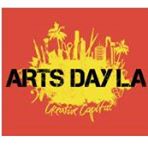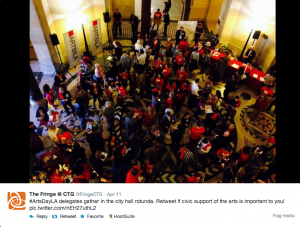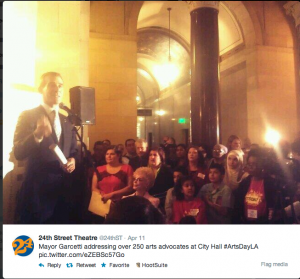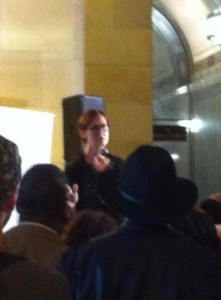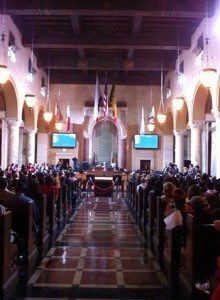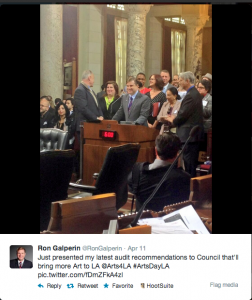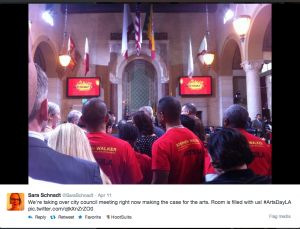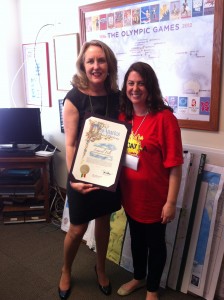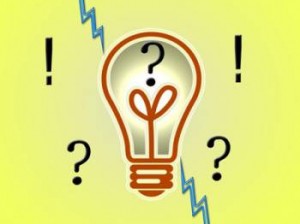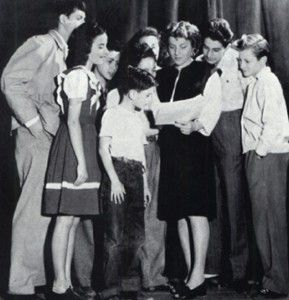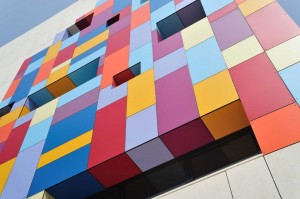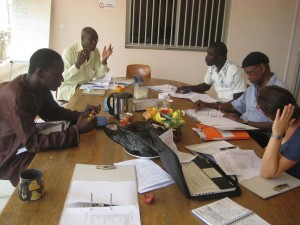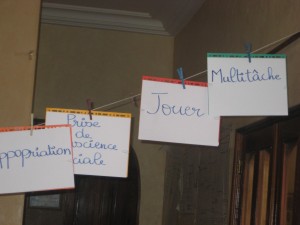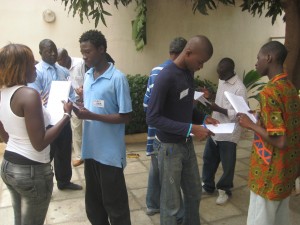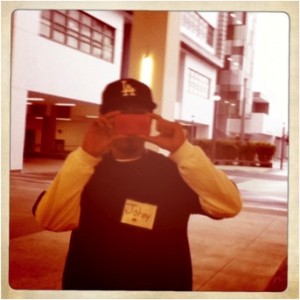On Friday, April 11, it was my honor to support the arts in Los Angeles County as a District 4 delegate at ArtsDay 2014. This annual event “…unites artists, audiences, and arts organizations with the leaders who represent them in City Hall, fostering stronger relationships between those crafting the vision of LA’s future and those who make it a reality” (http://www.artsforla.org/april-11-2014, para. 2).
Several hundreds of Angelenos crowded the City Hall Rotunda on Friday morning, exchanging pleasantries over coffee and bagels, discovering mutual acquaintances and common causes, and generally optimizing the opportunity represented by gatherings of like-minded peers.
District 4 City Councilmember/Honorable City Council Assistant President Pro Tempore Tom La Bonge, a key supporter of ArtsDay 2014, exploited his booming voice and the space’s cavernous acoustics to welcome all of us assembled.
Los Angeles Mayor Eric Garcetti, fresh from his State of the City address the previous evening, eloquently affirmed his dedication to arts advancement.
Garcetti spoke about Los Angeles’s potential to be the most creative and innovative place on the planet, and offered ways in which this commitment to the arts and out-of-the-box thinking might take shape, such as library cards that depict great Los Angeles art works and neighborhood murals that celebrate the contributions of local heroes.
We learned about the role that the Local Control Funding Formula (LCFF) might play in bringing arts education back to LAUSD, saluted Stand for the Arts, a recently-launched, national arts initiative, and cheered for Arts for LA Executive Director Danielle Brazell who declared that this is her community, and she cares about her community.
Then we trooped into the City Council Meeting, already in progress, to witness the Presentations & Proclamations segment. Members of the Council (whom, incidentally, are 14 males and one female) praised Angelenos’ achievements and raised consciousness about social issues with local implications. First, the Honorable City Council President Herb J. Wesson Jr. urged the adoption of a yippy white puppy, which Wesson seated beside him at the podium. Wesson was quite persistent. The dog looked on. Finally someone in the crowd stepped forward to adopt! Perhaps the odds were good since Wesson was unrelenting and the chambers were packed — standing room only.
Tom LaBonge revealed the Dodger blue beneath his red ArtsDay T-shirt and extolled the legacy of Jackie Robinson. The color barrier-breaker’s sister-in-law, niece, and other descendants stood beside the Councilmember, then shared a few remarks about the late Jackie.
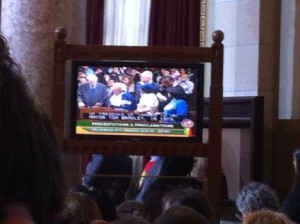
Members of the Robinson family commemorate Jackie Robinson at the Los Angeles City Council meeting on April 11, 2014
Other Council members went on record to variously: recognize a group of young college students, “the future of LA,” all studying at city colleges; honor a long-running Japanese business’s contributions to Little Tokyo; and remind us all of the importance of water. Finally, ArtsDay was up.
Our speakers articulated ways in which arts affect multiple facets of life (including healing and wellness, said a doctor at Cedars Sinai Medical Center) and suggested ways in which the city might fund arts advancement.
Success!
Delegates convened for a working lunch, where Arts for LA Communications Manager Charlie Jensen took center stage. Arts for LA, the organization that created ArtsDay three years ago and has run it ever since, empowers advocates, trains delegates, and lobbies year-round to promote policies that uphold these values:
- The arts foster civic engagement, stimulate economic activity, and increase cultural empathy, and thus play a crucial role in sustaining thriving communities.
- Every resident deserves access to a variety of arts and cultural experiences, both in the major arts institutions and in neighborhood cultural centers and programs.
- Arts education is central to the development of all children and to ongoing creative engagement for people of all ages.
- Artists and arts organizations require a social environment that values and supports their contributions and encourages excellence.
- The breadth, depth, and diversity of artistic and cultural life are critical measures of the vitality of Los Angeles.
SOURCE: http://www.artsforla.org/mission-vision-values
Before the large group, Charlie reviewed three to four “asks,” or propositions that City Councilmembers might champion, across three categories: cultural/creative economy, cultural policy, and arts education.
Our District 4 delegation — Sarah Russin, Karen Constine, Jina Chung, Ellis Mick, and myself — met with three members of Councilmember Tom LaBonge’s staff: Carolyn Ramsay, Chief of Staff; Kamilla Blanche, Director of Arts & Culture and Sister Cities; and Chris Shin, Deputy (to whom Tom had asked all of the advocates, standing atop the City Hall staircase for a photo op, to sing “Happy Birthday”).
We presented the following two asks:
- Fix the Arts Development Fee (ADF) Administrative Code.
- Establish an annual Joint Committee Meeting of Workforce Development and Arts, Parks, Health, Aging, and the River Committee to ensure LA and LAUSD are united in serving our city’s young people.
Fix the Arts Development Fee (ADF) Administrative Code
Each City Council District has collected ADF funds that, due to a restrictive language in the code, are not serving residents of Los Angeles (Administrative Code Division 22 Article 1 Section 22.118). Widening the interpretation to allow these funds to be used will foster greater cultural equity and increase access to cultural resources for underserved neighborhoods in districts with areas of ongoing development. -Arts for LA
Here’s how I understand it: Local land developers must aside a portion of each project’s budget to support an arts-related element. However, the City Attorney has narrowly interpreted the (somewhat restrictive) code so that each developer-funded initiative must benefit employees, residents, and other stakeholders simultaneously. Basically, the only way to do that is to pay an artist to erect a sculpture that will preside over a building. Now there’s nothing wrong with sculptures! But there are other worthy ways to support the arts, and the developers’ arts funds are not going to dozens of sculptures, they’re just sitting in an account, unused — $10 million worth of untapped artistic potential.
As we talked about the ADF issue, Tom stuck his head into the conference room.
“Should we call for a quick motion to review funding of art?” Tom asked.
Karen, formerly Interim General Manager of the Department for Cultural Affairs (DCA), explained that a motion already had been called.
“Who cuts the check on that?” he inquired.
I loved that direct question. We weren’t just there to espouse principles, we were there to do things that reflect, support, and advance those principles. So who controls the purse strings? Great question. Karen identified the City Attorney and City Comptroller as key players, and the DCA as the administrator of the funds.
Establish an annual Joint Committee Meeting of Workforce Development and Arts, Parks, Health, Aging, and the River Committee to ensure LA and LAUSD are united in serving our city’s young people.
The City of Los Angeles and the Los Angeles Unified School District have a critical shared interest: the future of our region. We cannot separate the success of our students from the circumstances in which they live, nor can school districts discount their role in helping raise the voters and citizens of tomorrow. An annual dialogue is a strong first step toward using the arts as a bridge to empower student success in school and life. -Arts for LA
At first, that’s basically what I explained to the three staffers — young people navigate multiple spheres, and even the best school district in the world can only contribute to the school sphere, and possibly a bit beyond. This leaves other spheres unattended and disconnected from school. Because the ways in which we care for children affects their school life, and vice versa, this is a problem. Safe streets and public health are served by ecologies and coordinated efforts.
I paused. The staffers were with me, but what could do they do for me? How does such rhetoric task action-oriented people? I had to speak in the language of public servants, give “Who cuts the check on that?”-type information, focus on the concrete and actionable. So I started to riff.
“If LAUSD and the River Commission were to join forces,” I said, “then students could investigate various aspects of the river for science projects, take field trips to the river, [bring in the Arts Committee and] create river-inspired art, install art along the banks of the river… If LAUSD and the Committee for Aging were to join forces, then perhaps service-learning opportunities that connect students with senior citizens could be designed…”
They nodded, but here’s the thing: Although the City Council communicates and coordinates with the State and the federal government, its relationship with LAUSD is practically non-existent. The School Board operates independently of the City; a liaison between the City Council and LAUSD only handles crises, not day-to-day collaboration. Separate budgets help to explain this extreme bifurcation, but there are some ways in which the City does support LAUSD — for example, the Department of Cultural Affairs funds various non-profits that provide supplemental arts programming in local schools. I believe that increasing awareness and sharing resources across LA and LAUSD should be a top priority. But advocacy of this issue must continue another day…
We concluded our meeting with a treat. To our delight, the office generously extended certificates of commendation to each of us, and we took a group photo and individual photos with Carolyn.
Delegates’ final stop was the Media Room, where we filled out evaluations and volunteers participated in on-camera interviews. I yammered about the conclusive body of research that attests to the benefits of arts engagement, characterizing it as a win-win-win-win-win. If the video producers are looking for lengthy, wordy soundbytes, then I set ’em up real good.
I truly appreciate each conversation I had with fellow arts advocates, including my Rotunda buddy Bill Parent and my City Council Meeting wingman Roi Matalon. I also want to thank all of my friends and colleagues who officially signed on as a “Friend” of ArtsDay:
- Center for Media Literacy
- GirlRising
- Imagination Foundation
- Jewish Women’s Theatre
- Las Fotos Project
- Laughter for a Change
- Lost Moon Radio
- Media Arts + Practice Division
- National Association for Media Literacy Education
- Story Pirates
- Take Action Games
- USC Annenberg Innovation Lab
- USC Joint Education Project
Your support went to an important cause, and our work continues! Thanks to all, and onward!


